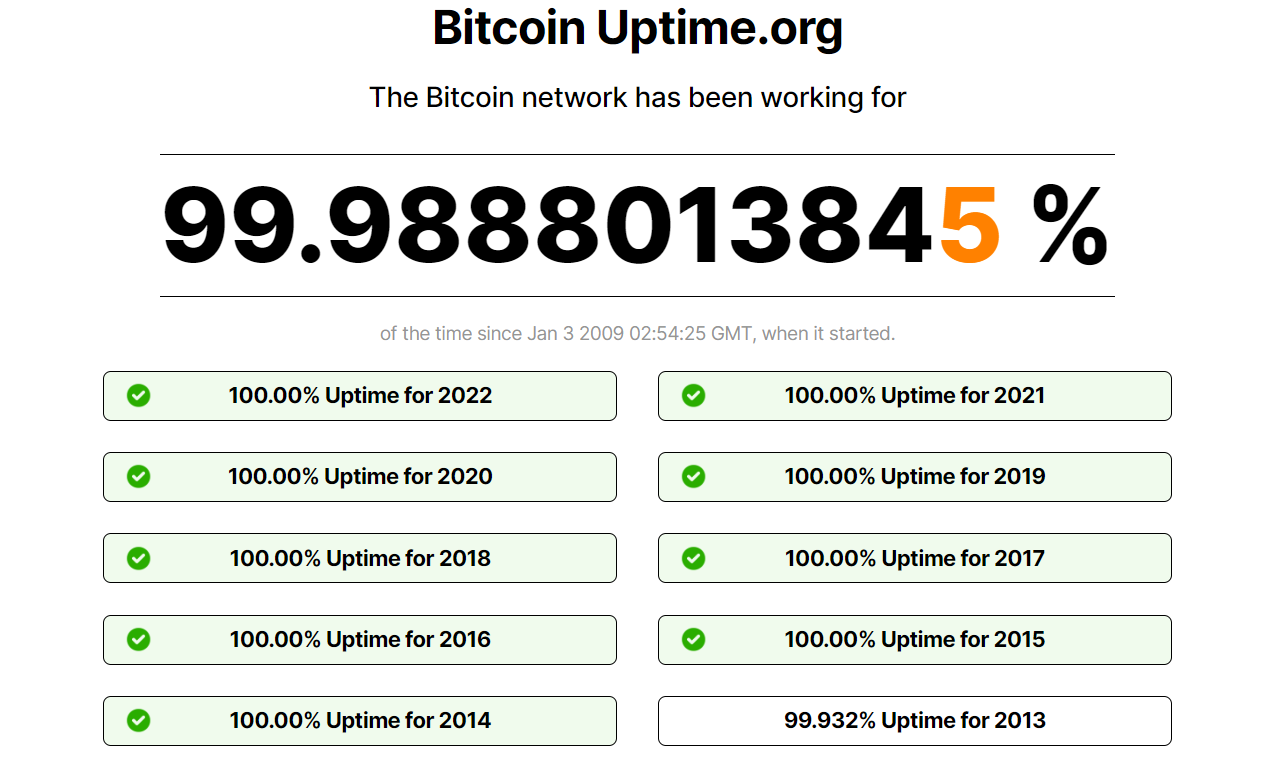3,964 days – almost 11 years – have passed since the last downtime in the Bitcoin network. The so-called uptime is therefore 99.98 percent. This makes the BTC blockchain one of the most reliable networks of all time.
Dan Held compares the uptime with Amazon, Facebook or Google. The Bitcoin veteran does not provide a percentage value. According to some Bitcoiners on Reddit, the comparison is flawed anyway. The difference to payment networks such as VISA, Mastercard or AMEX is much more interesting. According to Held, the networks of these service providers fail on average once a year.

Bitcoin beats US dollar and altcoins
The comparison with the world reserve currency, the US dollar, is also interesting. According to a Reddit post, the US dollar has an uptime of 99.984 percent, less than Bitcoin. The values arise from historical context:
In 1775, the Continental Congress of the United States authorized the issuance of the Continental Currency, the first U.S. currency denominated in dollars. By May 1781, these Continentals had lost so much in value that they ceased to circulate as currency. On July 6, 1785, the Continental Congress approved the adoption of a new version of the U.S. currency, the U.S. dollar.
Theoretically, the US dollar was inactive for four out of 249 years. However, there are no official measurement data on this.
It becomes more valid when comparing it with altcoins, primarily Solana. The “fastest blockchain in the world” has failed many times. Critics see the reason for the instability of the system in a design problem with the blockchain.
Bitcoin failure in 2010 and 2013
The first time Bitcoin failed was a year and a half after it went live. On August 15, 2010, a transaction occurred in block 74638 discovered, which created 184.4 billion BTC for three addresses. Two received 92.2 billion BTC each, the “block finder” received an additional 0.01 BTC. Reason for this: an error in code.
As can be seen from conversations in the Bitcointalk forum, it was Bitcoin founder Satoshi Nakamoto who solved the problem. Within five hours of the discovery, they released a new client version with a rule change to reject transactions with so-called spend overflow. This led to a soft fork of the blockchain. The incident lasted eight hours and 27 minutes: during this time the Bitcoin network was not active.
The last time Bitcoin fell In 2013 out of. Because miners were using a different client version, nodes rejected the blocks produced. This led to a brief fork in the blockchain at block height 252,450, which was resolved after six hours and twenty minutes.
This might also interest you
